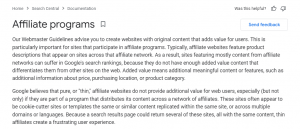In 2013, Warby Parker embarked on a bold journey into the realm of physical retail by opening its first brick-and-mortar store in the fashionable neighborhood of SoHo, New York City. This strategic pivot was not merely an exercise in expanding their market presence but a thoughtful response to a significant consumer insight: many people remain hesitant to purchase eyewear exclusively online. As consumers often rely on tactile experiences to evaluate products like eyeglasses, Warby Parker’s decision to branch out into retail was a savvy move aimed at merging digital convenience with the traditional shopping experience.
Warby Parker’s original model was groundbreaking, emphasizing a direct-to-consumer sales approach that fundamentally disrupted the eyewear industry. Customers could browse their extensive selection online, order frames, and receive a home try-on kit featuring five pairs to test out at their leisure. While this innovative model was incredibly successful, it also highlighted some inherent challenges, particularly the need for an eye exam—the foundational step in acquiring prescription glasses.
The shift towards physical retailing was multifaceted. Beyond merely selling glasses, Warby Parker sought to create aesthetically pleasing spaces that drew consumers in. They described their stores as the “Apple Stores of optical retailing,” a claim that underscores their commitment to design, engagement, and customer service. With striking interiors and well-trained staff, these locations invite customers to explore an impressive range of stylish eyewear at accessible price points, starting at just $95. Warby Parker’s stores quickly became destinations in their own right, combining the elements of a boutique shopping experience with the practical necessities of eye care.
Today, Warby Parker has successfully expanded its footprint with over 260 stores across the United States and Canada. This rapid growth not only signifies the effectiveness of their strategy but also reflects changing consumer preferences towards holistic shopping experiences. Within these retail spaces, customers can now receive professional eye exams, purchase contact lenses, and explore a curated collection of eyeglasses—all in one convenient location. This one-stop-shop response is a significant component of Warby Parker’s mission: to provide comprehensive vision care to customers.
The Importance of In-Store Eye Exams
One of the most significant challenges for companies in the eyewear sector is the integrative nature of eye exams and eyewear purchases. While the online model works well for certain markets, the medical aspects of vision care necessitate in-person consultation. Eye health is paramount, as poor vision can have serious implications for an individual’s quality of life. This realization has led Warby Parker to flex their strengths in retail by offering in-store eye exams that are both convenient and cost-effective.
In-store eye exams help demystify the process of obtaining eyewear, making it simpler for consumers who are confused about prescriptions or unsure if they need an update. By presenting themselves as a supportive partner in eye health, Warby Parker fosters trust with its clientele. The exam process itself has become streamlined, allowing for a quick transition from an eye test to eyewear selection, thereby enhancing overall customer satisfaction. This improved service stands in stark contrast to the traditional eyeglasses shopping experience, where customers were often left to navigate the murky waters of eye care on their own.
Broader Impacts on the Eyewear Industry
Warby Parker’s entry into the physical realm has not only changed its own trajectory but has also influenced the broader optical retail landscape. Competing brands, like Zenni Optical and Bolle, initially focused on online sales but are now re-evaluating their models in light of Warby Parker’s success. The entrance of traditional optical stores into e-commerce and the integration of online and offline experiences reflects a significant evolution in consumer purchasing habits.
Moreover, Warby Parker has set a precedent for socially responsible business practices. The company famously adopts a “Buy a Pair, Give a Pair” policy wherein for every pair of glasses sold, a pair is distributed to someone in need. This mission-driven model resonates with socially conscious consumers and showcases the power of purpose in driving business success. By connecting their business model with social value, Warby Parker has produced a loyal customer base that believes in the brand’s broader goals.
Future Directions and Retail Innovations
Looking ahead, Warby Parker is likely to continue pushing the envelope within the eyewear industry. As they evolve their physical retail strategy, they will need to incorporate an omnichannel approach that fully integrates their online and offline efforts. Offering virtual try-ons through augmented reality, expanding their home try-on program, and maintaining competitive pricing are essential strategies for staying ahead in the competitive eyewear landscape.
The future of retail, particularly in specialized sectors like eyewear, will hinge upon the ability of brands to adapt to shifting consumer behaviors and preferences. As Warby Parker continues to cultivate its presence and service offerings, it exemplifies how traditional retail can successfully embrace innovation and socio-economic responsibility to forge lasting connections with customers.
Through their innovative approach to eyecare and eyewear, Warby Parker is redefining how consumers perceive and engage with optical retailing. Their blend of design, service, and social impact creates not only a unique shopping experience but also a model for how brands can navigate the complexities of modern retailing in an ever-evolving market. As they continue to shape the future of the eyewear industry, Warby Parker is poised to inspire new standards for quality, accessibility, and responsibility in consumer products.



